Iceland erupts
© Ragnar AxelssonIceland sits over what's known as the Mid-Atlantic Ridge, the boundary between the Eurasian and North American tectonic plates - two of the largest on the planet.
The Earth's crust is made up of different plates that move against each other, that have raised mountains and created volcanoes over millions of years.
The Eurasian and North American plates are moving apart by a few centimetres every year, making the country a hotbed of seismic and volcanic activity.
This allows magma to rise up to the surface, which erupts as lava and/or ash.
Icelanders are used to volcanic activity, and have built a successful tourism industry around it.
This is the second volcanic eruption on the Reykjanes peninsula in south-west Iceland in a month, and the fifth since 2021.
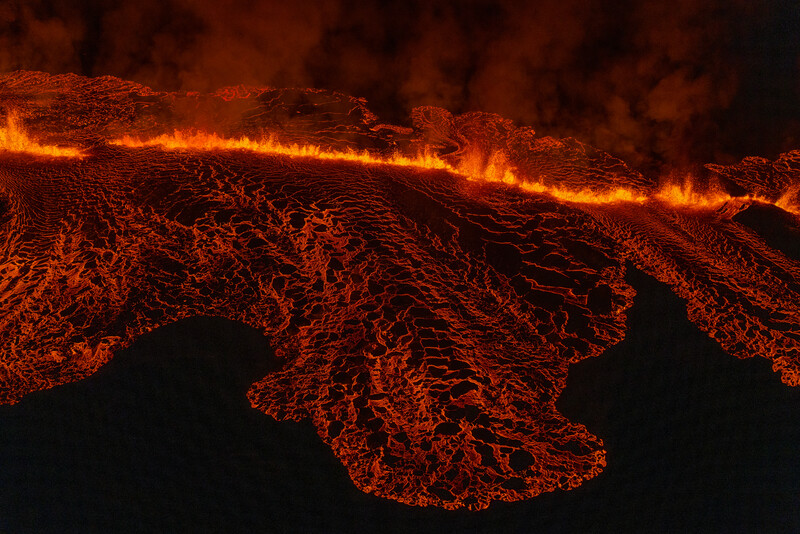
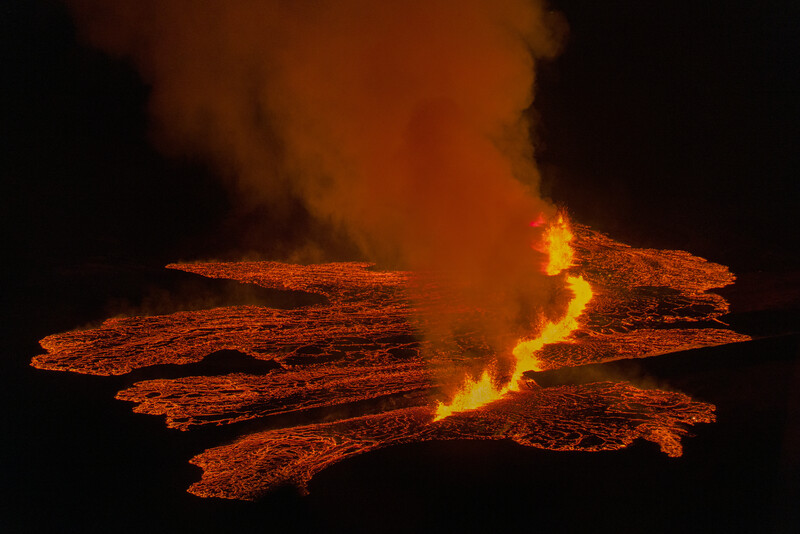
Last month, an eruption started in what's known as the Svartsengi volcanic system on 18 December.
The lava missed the town of Grindavik, although all its 4,000 residents had been evacuated beforehand.
Around 100 had returned to their homes before an evacuation order was again issued on Saturday, according to local authorities. The alert level has been raised to "emergency" - the highest of the three-level scale which signals there could be a threat of harm to people, communities, property or the environment.
At a press conference on Jan 14th, Prime Minister Katrin Jakobsdottir said: "Today is a black day for Grindavík and today is a black day for all of Iceland, but the sun will rise again." "Together we will deal with this shock and whatever may come. Our thoughts and prayers are with you."
Science journalist and volcanologist Robin Andrews says the situation near Grindavik, south-west Iceland, is "pretty much a worst case scenario" now that lava has made its way into the town, which has been evacuated.
Speaking to the BBC, he warns that the aftermath of the eruption could prove "fairly problematic" for people with pre-existing respiratory problems.
Sulphur dioxide, a noxious gas that is an irritant to the skin, eyes, nose and throat, is released during volcanic activity. "What can be said with certainty is that it's an extremely perilous and deleterious situation," he said.
A volcano on the Reykjanes peninsula erupted in the early hours of Sunday, spilling lava into the fishing town.
Sunday's eruption is the fifth to have taken place along the peninsula since 2021. Strong earthquake tremors preceded a December eruption in the Svartsengi volcanic system. In the weeks since, walls were built around the volcano to direct molten rock away from Grindavik, home to some 4,000 people.
The Icelandic Meteorological Office (IMO) said the barriers had been breached in some places, allowing lava to reach the town which then set houses and buildings on fire. Photographer Ragnar Axelsson flew over the eruption and made these incredible images.
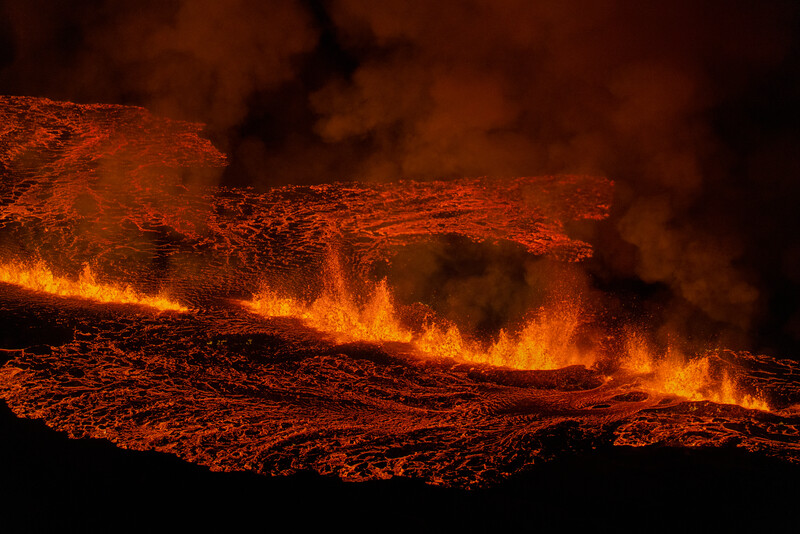


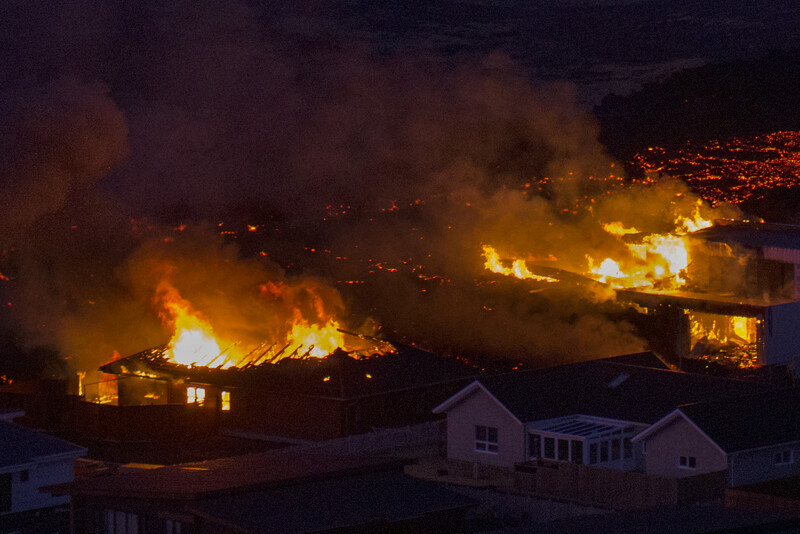

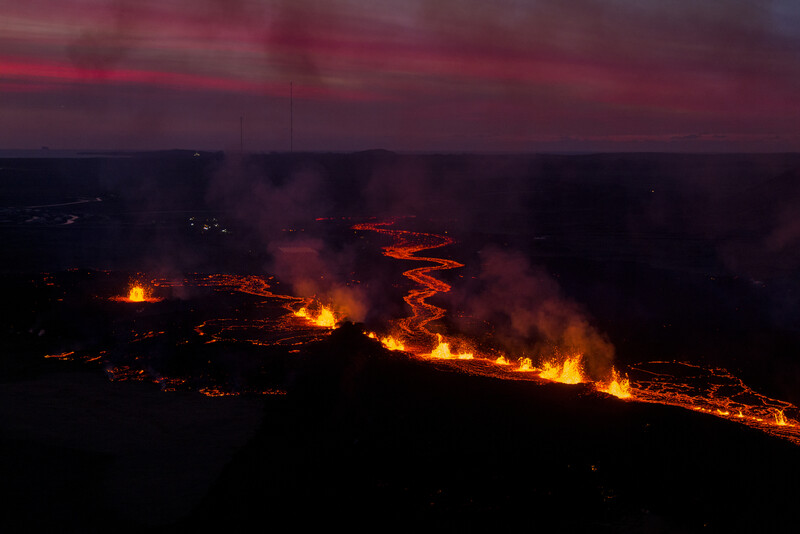

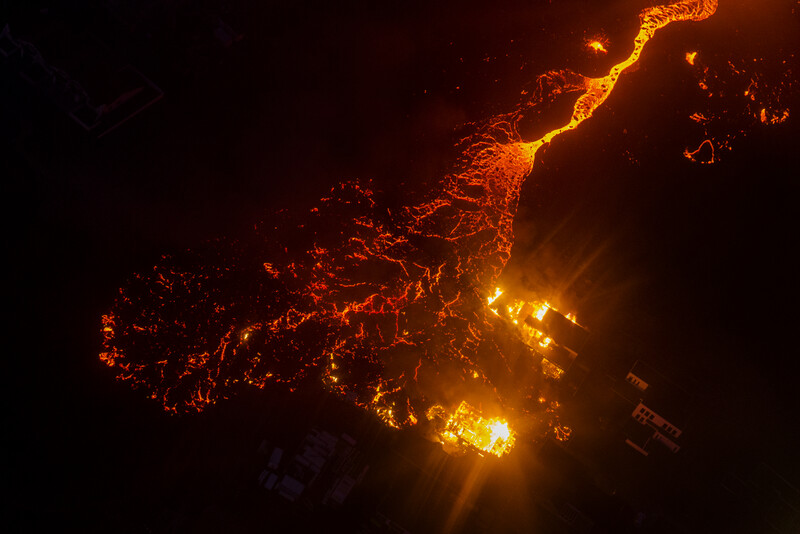
click the link to view the complete set of images in the archive
